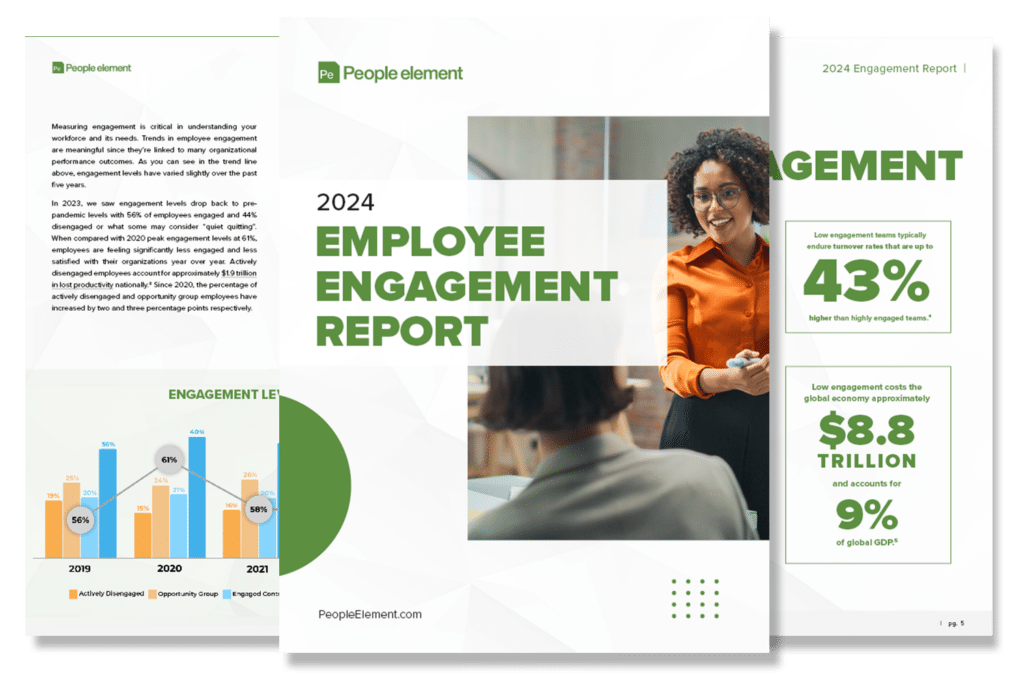Maybe you remember your first reward. It could have been a ribbon for swimming, a certificate for reading or the simple opportunity to go out for ice cream on report card day. From the time we are children, most people learn that with value and effort, comes reward and recognition, an expectation that ultimately endures into adulthood and the workplace.
A job is more than a paycheck that helps employees afford basic living expenses. A job shapes a person’s life, defining their schedule and providing opportunity. In addition to generating a living wage, an employer’s overall culture and approach to how they treat their employees molds the total employee experience, impacting their life in a big way. That includes wages, bonuses and benefits as well as workplace flexibility, career opportunities and more — otherwise known as total rewards.
An employee who feels appreciated will always do more than expected, and embracing a strategic approach with the latest HR tools like an employee engagement platform is pertinent to making employees feel valued and appreciated. By expanding the scope and looking more holistically at their benefits package and overall employee experience, organizations can uncover an opportunity to give employees what they value most, ultimately increasing both employee engagement and retention.
Define what makes you an employer of choice
As an HR leader, you champion the benefits and values of your organization to employees and prospective new hires daily. You are in essence, a marketer! Just like you define your brand by how customers actually experience, feel and interact, take the exact same approach for your people.
Define what it is that makes you an employer of choice. Many organizations say they are, but don’t illustrate how they accomplish that. Do you recognize team members regularly? Pay 100% of health insurance? Have a robust training program and a clear ladder for career advancements? Boast unlimited PTO? Pay for public transportation? Host company events off-site? Offer half-day Fridays during the summer months? Bring in lunch regularly? Allow dogs in the office? Provide paid volunteer days or incentive trips? Give special accolades for work anniversaries?
Spell out why new hires should join your dream team and why employees should stay. Then look at the full picture and not just the individual pieces that make up the employee experience. Tell your organization’s story to employees and tell it well, with a focus on reward and recognition.
Evaluate your current benefit system
During the Great Resignation, employers were focused on boosting salaries and benefits to compete for top talent. Now, with threats of a recession looming, today’s economy is shifting to one focused on engagement and retention of current employees with a cost-conscious twist.
Assessing where you are currently spending money on employee benefits is important to understanding where your rewards and recognition baseline lies. Make a comprehensive list of all the benefits, rewards, opportunities and incentives your organization offers and their associated costs. Do a deep dive with your finance team to determine where you may be able to recapture lost cash flow. Identify inefficiencies and areas where you can save money without taking away from the employee experience.
Having a comprehensive understanding of your organization’s current benefits and associated costs will set the stage for the next step in the rewards and recognition approach: figuring out what is important to your people and how they make trade-offs when it comes to rewards and recognition.
Identify what creates value for your people
Do your employees find money more tangible or paid time off? Offering pizza and casual dress on Fridays may be a game changer for some or uninspiring in the eyes of others. As organizations shift to focusing on both financials and current talent, there is an opportunity to reach out to employees and discover exactly what they value most rather than wasting resources on initiatives with less impact. Knowing what employees prefer is key to enhancing employee experience and overall engagement.
Utilizing an employee engagement platform is an easy and effective way to begin to understand your employees desires on a deeper level. People Element provides industry-leading employee engagement surveys that not only give your employees a voice, but also provide the answers to your most pertinent reward and recognition questions. Plus, organizations who increase their percentage of engaged employees to 70% or higher see their workplaces completely transform, with corresponding improvements in growth and profit.
Be strategic around the questions you ask so that you can then drill down into specific areas and find exactly which factors will stretch your dollars further while creating the most positive change for your people. People Element’s employee engagement software offers pre-built templates that ask the right questions to gain insights into employee rewards and recognition preferences.
Streamline costs while increasing employee engagement and retention
The benefits of rewards and recognition can be applied across organizations, whether public, private or non-profit, regardless of size, industry or specialization. Because employees pass judgment on their jobs daily, providing a consistent, reliable and positive employee experience is crucial. For the biggest impact, a company must approach rewards and recognition in a way that aligns with how their employees or job seekers think about rewards and recognition.
From interviewing and onboarding to day-to-day culture and career advancement opportunities, establishing, branding and executing your organization’s employee value proposition goes a long way towards boosting the employee experience. However, properly defining why you are an employer of choice requires research, and understanding where you are currently spending on benefits provides the launching point for a holistic, strategic approach.
Organizations don’t have to guess at what is going to affect the employee experience. Ask questions and be willing to listen to feedback. Doing so can help companies rationalize what benefits they offer while identifying where they’re wasting money. Ultimately, this approach to employee rewards and recognition drives meaningful change while using employer resources wisely.





